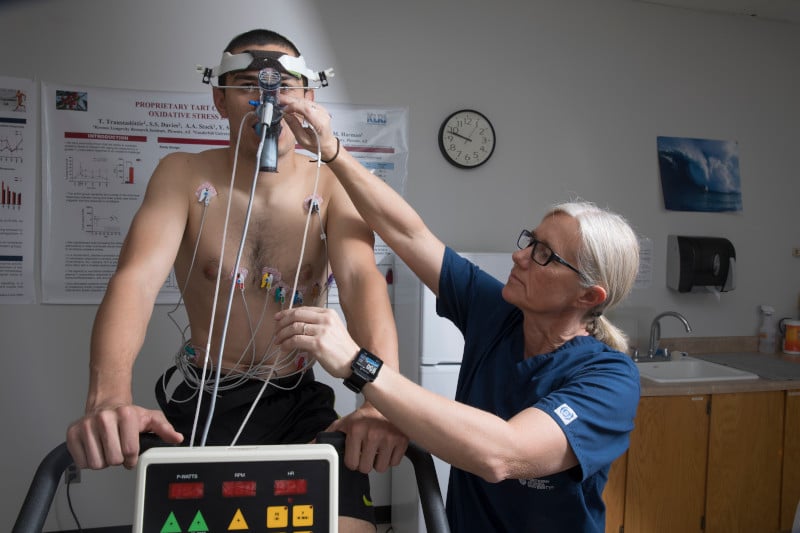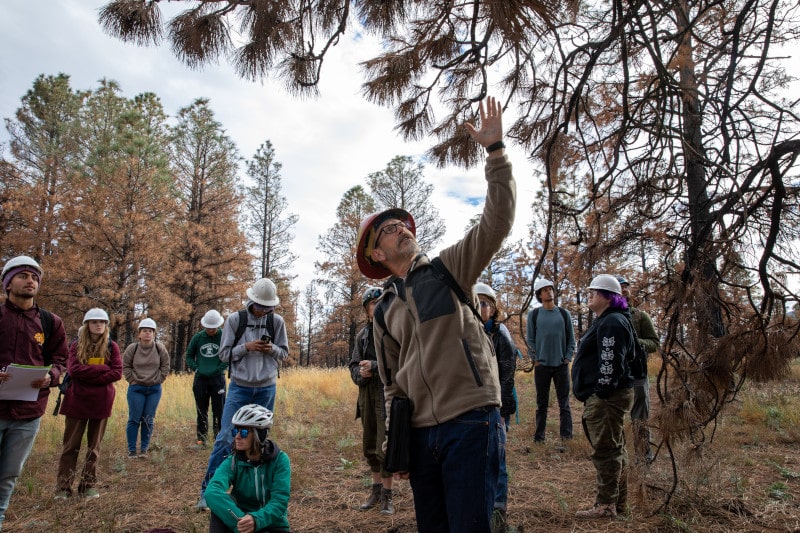A recent announcement shows that NAU is nearing a major research classification milestone, placing it in the highest tier of research universities in the country, according to a leading higher education classification organization.
NAU is projected to achieve R1 research status in 2025 when new criteria set out by the Carnegie Classification of Institutions of Higher Education are anticipated to go into effect. Those criteria are: 1) more than $50 million in annual research and development expenditures; and 2) at least 70 awarded doctoral degrees that are research- or scholarship-based. NAU is already exceeding these targets, and this R1 placement reflects the caliber of research and scholarly activity that has been happening at NAU for years.
“This designation is a testament that NAU’s mission to increase student access and success goes hand-in-hand with our strong research portfolio and efforts to address the important research questions of our time,” NAU President José Luis Cruz Rivera said. “With this designation, we see that through the combination of the significant increase in research grants organically secured by our teacher-scholars and the incredible students we are recruiting into our groundbreaking doctoral programs, we have achieved a long-sought-after goal even as we have made significant strides in advancing our access mission.”

Vice President for Research Jason Wilder added that, although the designation will not be official until 2025, NAU is on track to stay well above the proposed thresholds for R&D expenditures and number of doctoral degrees granted as the university continues to successfully compete for external funds that enable strong research outcomes and outstanding training opportunities for students.
“Particularly in Arizona, our impact as a research university can be overlooked next to UA and ASU, and an R1 designation will help to better communicate to the general public as well as the scholarly community NAU’s established excellence and leadership in many scholarly fields,” he said. “Importantly, it shows that our student-focused mission, which includes faculty who are teacher-scholars with a strong dedication to education and student mentorship, is compatible with recognition as a top-tier research university.”
How NAU got here
NAU first exceeded the $50 million R&D expenditure criterion several years ago and has sustained year-over-year growth in federally funded research spending since—a pattern Wilder expects to continue into the future. The health of NAU’s doctoral degree programs is also strong, with relatively new degrees in areas like informatics, astronomy and planetary science and interdisciplinary health netting strong enrollment numbers and building on NAU’s well-established doctoral programs in areas like education, which is the largest producer of qualifying doctorates at NAU.
What this means for NAU

The designation will help in recruiting faculty and students because it provides assurance of the university’s commitment to research and scholarship, Wilder said, especially in graduate programs. An R1 research designation also adds to NAU’s reputation among funders and potential partners, offering a testament to NAU’s strengthening research credentials.
Julie Baldwin, the executive director of the Center for Health Equity Research (CHER) and principal investigator for the Southwest Health Equity Research Collaborative (SHERC), and her team are responsible for bringing more than $60 million in federal funding to NAU. SHERC is the largest of those grants; in 2017, NAU received $21.4 million in funding from the National Institute on Minority Health and Health Disparities, and it was renewed in 2022 for more than $21 million for another five years. This funding actively supported 100 faculty and postdoctoral scholars and 116 students from 29 departments and five colleges; many of those researchers are early-stage investigators and come from underrepresented backgrounds.
“This is so exciting to see the progress in our research designation and what it represents for researchers at every level,” she said. “We look forward to continuing our role at NAU in building capacity in biomedical, clinical, behavioral and community-based research because we believe that it directly benefits our students and the citizens of Arizona.”
What happens next
Although NAU has already met the two criteria, the university is continuing to build on this work. Several Ph.D. programs, such as interdisciplinary health, are showing strong enrollment numbers but are new enough to have only a few graduates as of yet. In the coming years, NAU’s doctoral numbers likely will continue to increase as the new programs produce more graduates. Additionally, the Office of the Vice President for Research recently created graduate research assistantships that support doctoral student working in areas that are a priority for ABOR’s Technology Research Initiative Fund (TRIF) with the goal of increasing enrollment and degrees awarded.
Research expenditures are likely to continue increasing as well, with targeted growth in the College of Engineering, Informatics, and Applied Sciences, the College of Earth, Forestry and Natural Sciences, and the College of Health and Human Services building on their funding successes of the last few years.
What this means for Arizona
This pending designation also puts Arizona in a unique position. Only 20 universities nationwide have achieved both an R1 research designation and Hispanic-Serving Institution designation, three of them are in Arizona—another indicator of the state’s focus on access and scholarly excellence.
Heidi Toth | NAU Communications
(928) 523-8737 | heidi.toth@nau.edu




